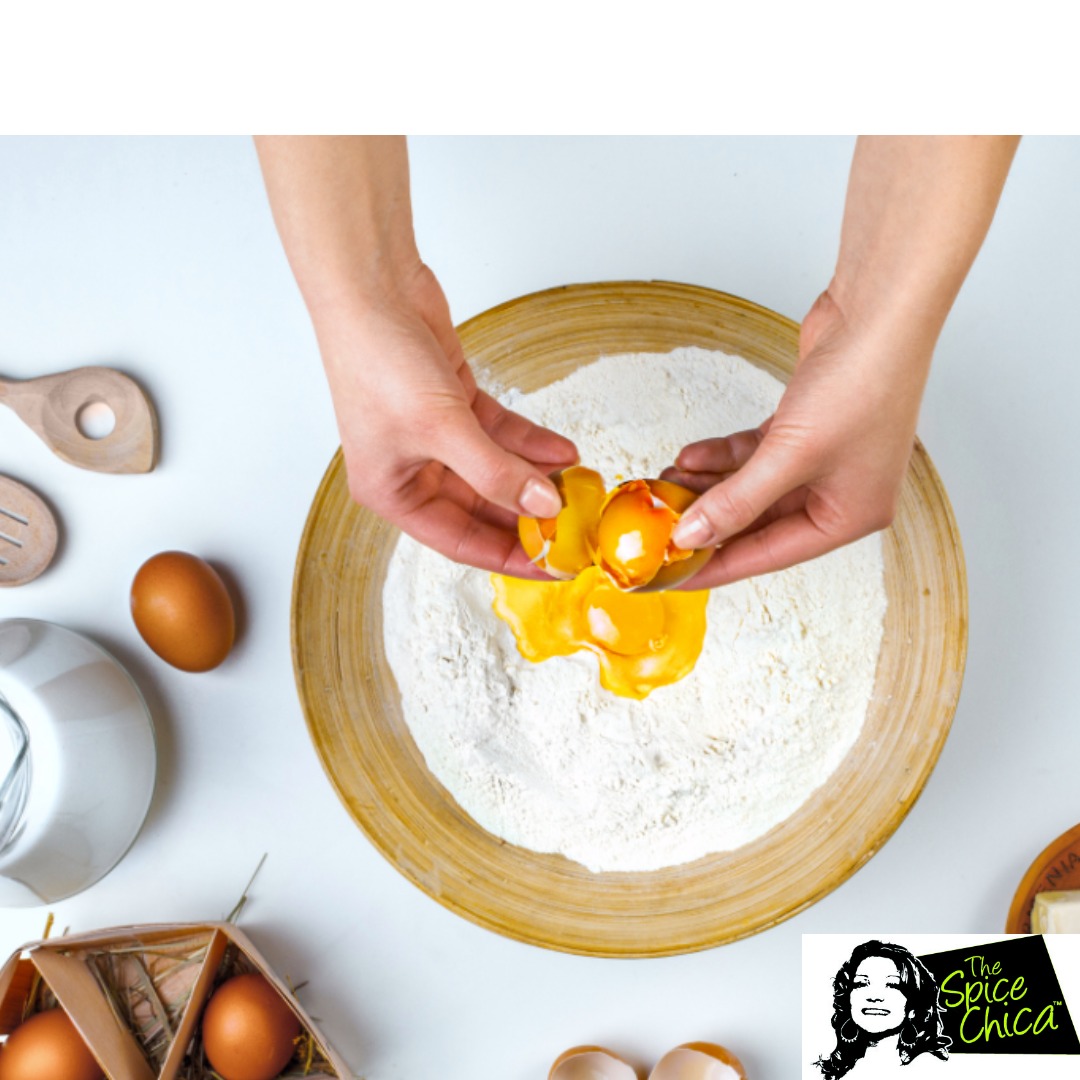Fresh homemade pasta is truly a fun thing to make and has so many creative possibilities. And you can make it at a moment’s notice – who doesn’t have eggs and flour in their kitchen?
There is no one correct recipe for fresh pasta. In Italy, different regions have different ways of making it. Some places only use eggs and flour and others use only water and flour. Some cooks add a little salt and olive oil, some do not. You will have to experiment and decide what pasta recipe you like. How do we like to make ours? We basically make my pasta the way they do in the Emilia Romagna (Northern/ Bologna) region of Italy – with just fresh eggs and flour.
Ingredients: makes 6 time 1 hr.
- 6 large free-range eggs
- 600 g Tipo ’00’ flour
Instruction:
- Place the flour on a board or in a bowl. Make a well in the centre and crack the eggs into it. Beat the eggs with a fork until smooth. Using the tips of your fingers, mix the eggs with the flour, incorporating a little at a time, until everything is combined. Knead the pieces of dough together – they’ll all bind together to give you one big, smooth lump of dough!
- Using a food processor: put flour and eggs, mix until the flour looks like breadcrumbs, place the mixture on to your work surface and bring the dough together into one lump, using your hands.
- Once you’ve made your dough you need to knead and work it with your hands to develop the gluten in the flour, otherwise your pasta will be flabby and soft when you cook it, instead of springy.
- Kneading: You just have to play with the dough for a bit with your hands, squashing it into the table, reshaping it, pulling it, stretching it, squashing it again. You’ll know when to stop – it’s when your pasta starts to feel smooth and silky instead of rough and floury. Wrap it in cling film and put it in the fridge to rest for at least half an hour before you use it. Make sure the cling film covers it well or it will dry out and go crusty round the edges.
- How to roll your pasta using a machine: make sure it’s clamped firmly to a clean work surface before you start (use the longest available work surface you have).
- Dust your work surface with some Tipo ‘00’ flour, take a lump of pasta dough the size of a large orange and press it out flat with your fingertips. Set the pasta machine at its widest setting – and roll the lump of pasta dough through it. Lightly dust the pasta with flour if it sticks at all. Click the machine down a setting and roll the pasta dough through again. Fold the pasta in half, click the pasta machine back up to the widest setting and roll the dough through again. Repeat this process five or six times. It might seem like you’re getting nowhere, but in fact you’re working the dough, and once you’ve folded it and fed it through the rollers a few times, you’ll feel the difference. It’ll be smooth as silk.
- Time to roll the dough out properly, working it through all the settings on the machine, from the widest down to around the narrowest. Lightly dust both sides of the pasta with a little flour every time you run it through. When you’ve got down to the narrowest setting, to give yourself a tidy sheet of pasta, fold the pasta in half lengthways, then in half again, then in half again once more until you’ve got a square-ish piece of dough. Turn it 90 degrees and feed it through the machine at the widest setting. As you roll it down through the settings for the last time, you should end up with a lovely rectangular silky sheet of dough with straight sides. If your dough is a little cracked at the edges, fold it in half just once, click the machine back two settings and feed it through again.
- Once you’ve rolled your pasta the way you want it, you need to shape or cut it straight away. Pasta dries much quicker than you think, so whatever recipe you’re doing, don’t leave it more than a minute or two before cutting or shaping it. You can lay over a damp clean tea towel which will stop it from drying.


